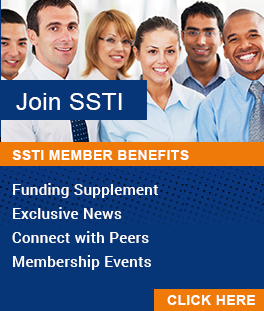nsf
Useful Stats: Business R&D continues to rise despite inflationary concerns; federal share wanes
Domestic business R&D expenditures have jumped 15% ($89 billion) from 2021 to 2022. This jump continues a decade-long trend of year-over-year increases, as a new 2022 Business Enterprise R&D (BERD) survey shows.
Recent Research: Gender differences in motivations for academic entrepreneurship
Since the inception of I-Corps, only 20% of participants have been women, according to the 2023 National Science Foundation I-Corps biennial program report.
US competitiveness sabers drawn for budget battle, election, future
Significant differences between the House and Senate versions of the FY 25 budget numbers for science and the quadrennial election cycle might explain the increased language one hears concerning national security, competitiveness and global economic conditions. Data presented in a July issue brief by the National Science Board (NSB), however, should help raise the issue to encourage honest discussion about how the federal government will take on the challenges to U.S. leadership in innovation. Additionally, a new paper from the Aspen Strategy Group et al.
NSF Convergence Accelerator program expansion is intended to enable more research to address regional problems
The five-year-old NSF Convergence Accelerator, which has funded nationwide research projects to address major societal challenges, is adding 10 “anchors” to focus on regional challenges. The regional anchor organizations will engage in the same solution development for underserved, underrepresented organizations and communities as the current national program. However, as part of the regional expansion, NSF aims to reach more local communities to help solve challenges that are especially meaningful to a particular region.
NSF launches map showcasing scale and impact of TIP awards
The National Science Foundation’s (NSF) Directorate for Technology, Innovation, and Partnerships (TIP) has released a new pilot map with data on over 3,300 awards nationwide managed by TIP starting from fiscal year 2023.
NSF publishes new report on the STEM labor force
Nearly one out of every four workers in the United States is now involved in a STEM occupation, and 41 percent of those STEM workers do not have an associate’s degree or higher, according to data presented in the latest NSF Science & Engineering Indicator report, The STEM Labor Force: Scientists, Engineers, and Skilled Technical Workers.
The National Science Board releases the biennial Science and Engineering Indicators report
The National Science Board released the biennial Science and Engineering Indicators report on Wednesday. This report compiles data about the composition of the U.S. research enterprise and its trajectory relative to that of other nations. It covers data collected through 2021.
Congress to fund Commerce and Science agencies in first half of FY 2024 action
More than five months into fiscal year 2024, Congress has approved an agreement covering six of the twelve annual appropriations bills. Many tech-based economic development (TBED) programs received funding equal to the FY 2023 base appropriation—a strong sign of support for a year in which Congress agreed to return to FY 2022 overall spending levels and many programs across the federal government, therefore, saw cuts.
NSF awards $20 Million to emerging research institutions
Last week, the National Science Foundation announced it would provide $21.4 million to four projects at emerging research institutions (ERIs) to advance research administration infrastructure and support systems at non-R1 institutions.
NSF is accepting EArly-concept Grants for Exploratory Research (EAGER) proposals
The NSF Directorate for Technology, Innovation, and Partnerships (TIP) is accepting EArly-concept Grants for Exploratory Research (EAGER) proposals that will advance the state of the art in assessing place-based innovation's societal and economic impacts. This funding opportunity aims to address gaps in publicly available data and associated knowledge to adequately and appropriately benchmark activities in place-based innovation grounded in integrating research and development, translation, and workforce development.

